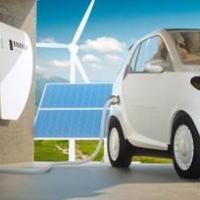News
Is Slovenia able to achieve its goals in e-mobility?
14. Aug, 2018For the purposes of becoming a low-carbon society, Slovenia has set an ambitious goal to reach 200,000 e-vehicles (EV) by 2030. The current electric power system and our purchasing power force us to ask ourselves whether this goal can be realised, how much the state and citizens will have to pay, how it will affect other economic sectors and, especially, what will be the real final effects in the sense of reducing greenhouse emissions? Statistics show that the share of emitted greenhouse gases, caused by personal vehicles, is around 13 to 15%, the remaining share is produced by industry, heating, cargo, passenger, air and marine transport. Therefore, we have to ask ourselves, what to do with the remaining 85% of sources of greenhouse gases? I won't write about the advantages and weaknesses of EV, because unfortunately, this is quite an extensive area to talk about. If we forget about manufacture and battery recycling, we can assume that the use of EV is rational only if electric power produced from renewable energy sources, especially hydro power plants, has a very high utilisation rate. In e-mobility development, the extremely rich Norway (GDP USD 90,000) has been set as an example that many countries try to follow. But can they? This is a difficult task. With 5 million people, Norway has exceptional natural features. In the past few decades, it was able to use the profits from the sale of oil (!) to build many large hydro power plants with total installed power of 33.8 GW (!) and annual accumulation that represents a reliable and stable source of electric power. Because Norway mostly uses electricity for heating, their grid has been basically dimensioned 4- to 8-times stronger than in Slovenia, therefore, they do not need additional investments in the upgrade of the grid and take-off points. And what are the prospects for Slovenia? Not good, I believe. Today, the share of electric energy produced from RES is 30% (of which 97% come from HPP), considering the fact that we have practically utilised all our water sources and 17% of the sources depend on electric power import. Our grid has been designed to satisfy the rate of 1 kW/consumer; therefore, large investments and the time for upgrading the grid will be required. The state will need EUR 1.5 billion to subsidise 200,000 EV. But does it have that money? Probably not. What about potential EV buyers? Slovenia's GDP in the amount of USD 21,000 does not enable mass purchases of expensive vehicles, which is also shown in the annual rates of new vehicles purchases. Slovenians mostly buy new vehicles (80%) from the lower and middle car category, the purchasing price ranging up to EUR 20,000. Those with more money rather drive premium limousines and SUVs that are quite energy-consuming. There is no doubt that the road to a low-carbon society will be long, difficult, and full of changes that are needed in our way of thinking. And this will most certainly not come cheap.


